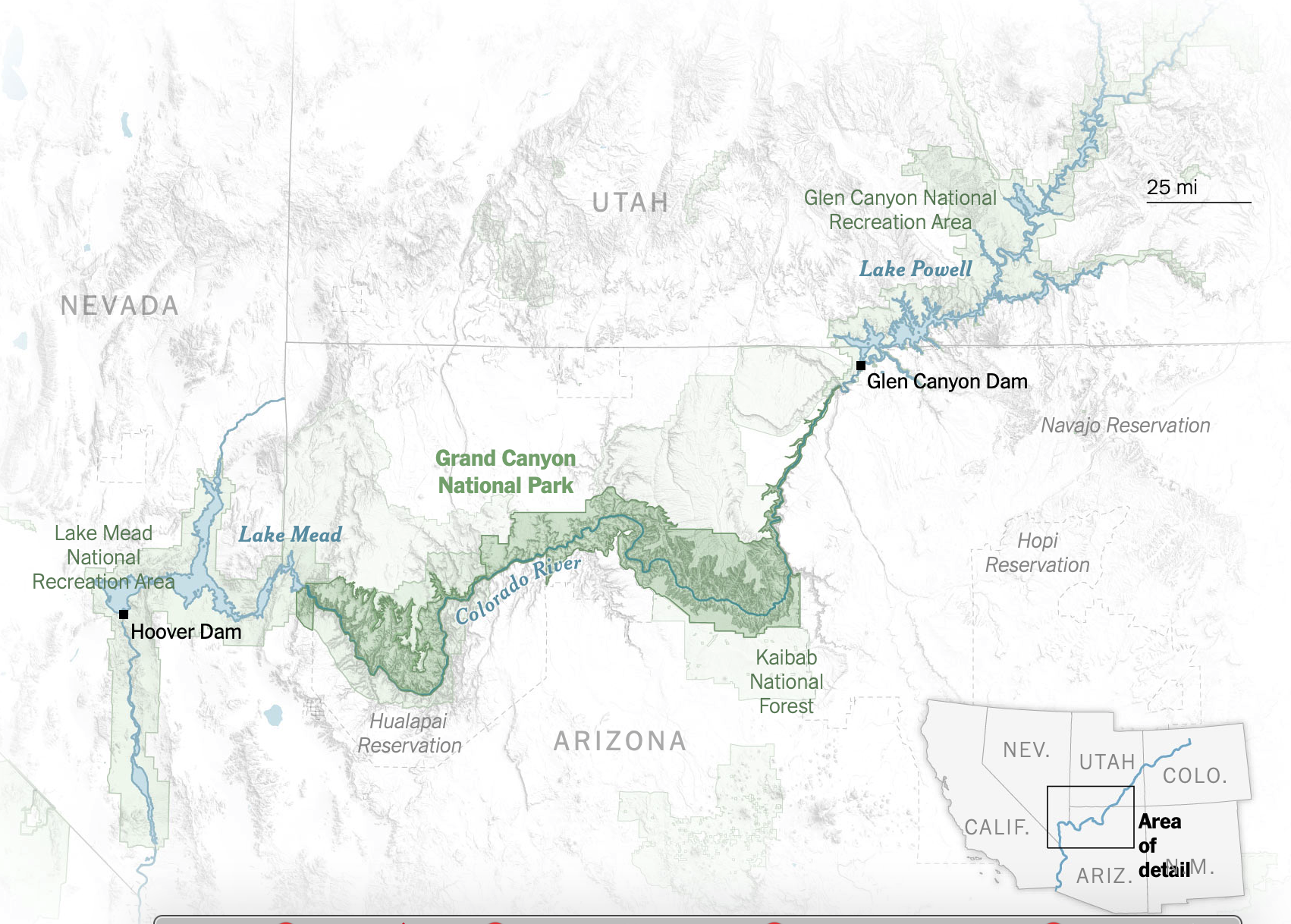Written and photographed by Raymond Zhong, who joined scientists on a 90-mile raft expedition through the canyon. || June 6, 2023
Spend long enough in the canyon, and you might start feeling a little unmoored from time yourself.
The immense walls form a kind of cocoon, sealing you off from the modern world, with its cell signal and light pollution and disappointments. They draw your eyes relentlessly upward, as in a cathedral.
You might think you are seeing all the way to the top. But up and above are more walls, and above them even more, out of sight except for the occasional glimpse. For the canyon is not just deep. It is broad, too — 18 miles, rim to rim, at its widest. This is no mere cathedral of stone. It is a kingdom: sprawling, self-contained, an alternate reality existing magnificently outside of our own.
And yet, the Grand Canyon remains yoked to the present in one key respect. The Colorado River, whose wild energy incised the canyon over millions of years, is in crisis.
As the planet warms, low snow is starving the river at its headwaters in the Rockies, and higher temperatures are pilfering more of it through evaporation. The seven states that draw on the river are using just about every drop it can provide, and while a wet winter and a recent deal between states have staved off its collapse for now, its long-term health remains in deep doubt.










